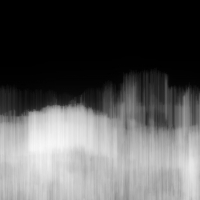Loopy Pro: Create music, your way.
What is Loopy Pro? — Loopy Pro is a powerful, flexible, and intuitive live looper, sampler, clip launcher and DAW for iPhone and iPad. At its core, it allows you to record and layer sounds in real-time to create complex musical arrangements. But it doesn’t stop there—Loopy Pro offers advanced tools to customize your workflow, build dynamic performance setups, and create a seamless connection between instruments, effects, and external gear.
Use it for live looping, sequencing, arranging, mixing, and much more. Whether you're a live performer, a producer, or just experimenting with sound, Loopy Pro helps you take control of your creative process.
Download on the App StoreLoopy Pro is your all-in-one musical toolkit. Try it for free today.
With Regard to GarageBand iOS vs GBOSX vs LPX...
With all the latest updates to GarageBand for iOS, and the new ways of sharing projects between GBiOS to GBOSX and GBiOS to LPX... if you have Logic Pro X, is there any reason at all to keep GBOSX installed on your desktop? Seems redundant and I could use the space on my main drive.
I'm thinking there's nothing in GBOSX that isn't in LPX, and I think the new ways of sharing GBiOS projects apply equally to GBOSX and LPX?



Comments
That's what I've did. Got rid of macOS Garageband. And while I was at it, iMovie (because FCP).
And in recent days, moved my iTunes folder and Photos library to an external usb3 drive, which works out nicely for breathing space on the internal one (start each of those apps with option held down to choose the new or different location for library).
Oh, that's a great idea, especially my Photos library. Was that complicated to move both of those? Or, can you just find the proper libraries and drag them over to another drive?
EDIT: Never mind... googling the instructions. thx
You can find them and move them (if in doubt, use rsync on the command line to copy it over first (if you don't know how to use rsync, learn how to use rsync - it is immensely useful and you'll use it for ever after)). But, you then have to tell the app where the new one is. Then you have to tell the app that that is your main library or system library. And, back it up somewhere else while you're at it (and that's where rsync comes in handy to do a quick partial sync every time one of them gets out of step with the other one).
Also, since quite some time ago, I've had google photos uploader doing a sync to Google Photos on the 'optimised' (Free!) setting (not the 'original' or jpg/raw setting, that'll use up storage that would cost money) (the optimised form is perfectly fine as far as I'm concerned, you'll still have your originals locally). Keeping all my photos on Google for free is highly useful for me, as my iPad syncs to google photos, my Nexus phone does of course, and I can see it all on the web on any of the computers. Handy for sharing stuff quickly without sending the actual stuff.
Also, and they don't exactly trumpet this, but there is (was?) a way to shove all of my music collection up to google music for free.
In fact, I will stress - if you're shifting a large library from one drive to another, I insist you learn to use rsync properly [1] instead of just copying it across by dragging in the finder. I've had so many times where a large library ends up (finder) copied with bits missing, for whichever reason, and in almost all cases, you'd be lucky if the finder manages it in one go. MacOS's stupid brain dead approach to file copying hasn't been fixed since the early days - if it fails on one single thing, the whole copy operation is abandoned, leaving a partial copy and no idea what is or isn't successfully copied and what you should do about it.
With rsync, you can freely cancel it partway and carry on later, or if it fails, just do it again, and it'll leave what's already copied and only work with what is different or not there yet. Always use rsync for major or significant complicated folders or structures to copy - don't trust a finder copy.
[1] by which I mean learn how the syntax works, so you don't end up copying a folder into an already existing identically named folder each time.
I might use
rsync -avz /thing/I/want/to/copy /place/it/will/goand it will end up copying the existing folder called copy, into a folder called go, over there.
If I use
rsync -avz /thing/I/want/to/copy /place/where/the/older/version/has/a/copyit will copy a folder called copy onto a backup folder over there also called copy. Watch out for trailing slashes, though - that changes the hierarchy behaviour:
https://developer.apple.com/legacy/library/documentation/Darwin/Reference/ManPages/man1/rsync.1.html
Thanks for the info!
Just to note, some of the "additional content" is shared between GB and LPX. I'm not sure how that translates to removing GB from your machine—likely unaffected since it's installed in a shared location. But something to at least be aware of I suppose.
Also, all of that additional content can easily be moved to an external drive using symbolic links. Apparently using a standard folder alias method is not the way to go as it doesn't honor any LPX updates that might come down the line.